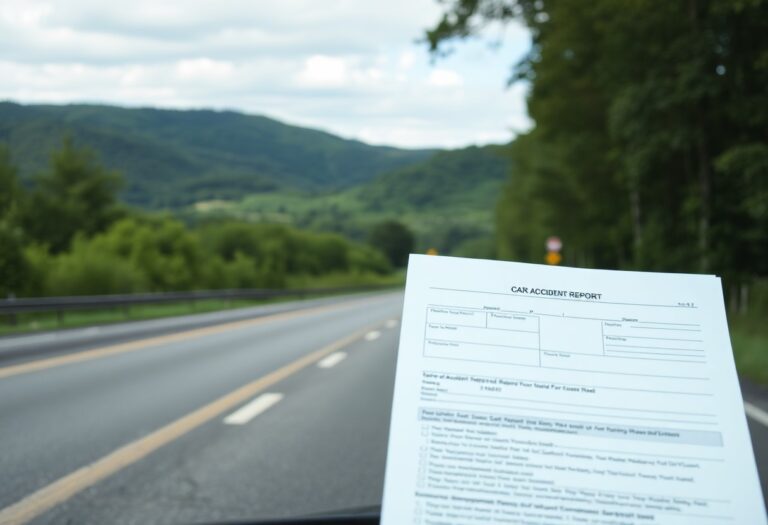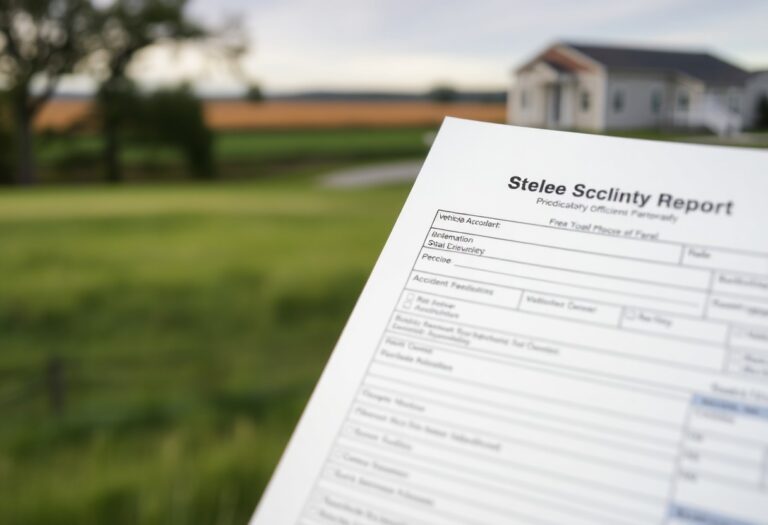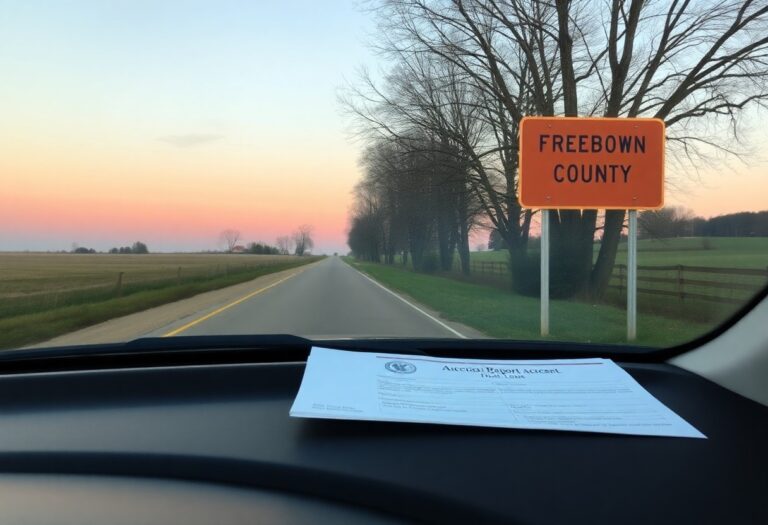Many residents of Midland County may find themselves needing to navigate the process of obtaining car accident reports following a collision. Understanding this process is important for your road safety and protection of your legal rights. In this guide, you’ll learn how to efficiently access these reports, the vital information they contain, and the steps you need to follow for a smooth experience. Armed with the right knowledge, you can turn an unfortunate situation into a proactive approach for your future driving.
Navigating the Legal Landscape of Car Accident Reports
Understanding the legal framework surrounding car accident reports is vital for drivers in Midland County, Texas. Familiarity with the procedural aspects can help you navigate post-accident steps effectively, ensuring that all necessary documentation is filed in accordance with local laws. In Texas, reporting requirements can vary based on the severity of the accident and the extent of damages or injuries involved.
Key State Regulations Impacting Reporting
Texas law mandates that any car accident resulting in injuries, fatalities, or property damage exceeding $1,000 must be reported to the Texas Department of Transportation within ten days. Knowing these reporting deadlines helps protect your legal standing and ensures compliance is maintained, potentially affecting any subsequent claims you may file.
Insurance Implications After an Accident
After a car accident, your insurance policy plays a critical role in determining your financial recovery. Texas operates under a “fault” system, which means the at-fault driver’s insurance typically covers damages. Understanding your coverage, including whether you have collision and comprehensive insurance, can greatly impact your out-of-pocket expenses and the claims process.
In Midland County, it’s vital to know how your insurance company assesses damages and handles claims after an accident. For instance, if you’re rear-ended and sustain $5,000 in damages, your insurer may require a detailed accident report, witness statements, and other evidence before processing your claim. Depending on your coverage, you may even opt to file a claim with your own policy to expedite repairs, but this could lead to an increase in your premium. Hence, you should be proactive in understanding your policy details and reporting protocols to maximize your benefits after an incident.
The Step-by-Step Process of Obtaining Your Accident Report
Obtaining your accident report can seem daunting, but following a systematic approach makes it straightforward. Start by identifying where the accident occurred, as this will determine which law enforcement agency handles the report. Next, gather necessary information such as the date, time, and location of the accident. Afterward, submit a request to the relevant agency, either in person or online, and pay any associated fees. Finally, collect your report, ensuring all details are accurate, as this document will be important for any legal or insurance claims.
Where to Request Your Report: Local Law Enforcement Options
Your first option for requesting your accident report is through local law enforcement agencies, specifically the Midland Police Department or the Midland County Sheriff’s Office. Visit their offices directly or call them to inquire about the process and required documentation. Typically, you may need to provide your driver’s license, details of the accident, and possibly a small fee to obtain a copy of your report.
Online Resources and Tools for Easier Access
For convenience, many local law enforcement agencies in Midland County offer online platforms where you can request your accident report. By visiting their official websites, you can typically find the necessary forms and additional information on how to complete the request electronically. This saves you time and allows you to track your request’s progress.
Using online resources significantly streamlines the process of obtaining your accident report. Midland County’s web portal often features user-friendly interfaces, allowing you to fill out forms digitally, upload any required documents, and make payments securely. By taking advantage of these tools, you can expedite your request and access your report from the comfort of your home, avoiding long wait times at local offices.
Understanding the Vital Elements Included in an Accident Report
Accident reports serve as an official account of the events surrounding a vehicle collision, detailing critical information that can impact insurance claims and legal proceedings. Within these reports, you’ll find aspects such as the date, time, and location of the accident, the vehicles involved, the parties’ contact information, and any witnesses present. Additionally, these documents often include diagrams illustrating the positions of the vehicles at the time of the accident, which can be necessary for understanding how the event unfolded.
Common Components: What to Look For
Expect to find key details such as the names and contact information of all parties involved, insurance details, and a summary of the incident. The officers’ analysis of the situation, including any citations issued and their assessment of fault, is also crucial. Diagrams or photographs of the scene can provide visual context that may be invaluable later.
Red Flags: Signs of Inaccuracy or Omissions
While reviewing an accident report, look for discrepancies or missing information that could undermine its credibility. Inconsistencies in witness statements, lack of clear details about injuries, or missing vehicle identification numbers may indicate potential issues. Ensuring that all elements are accurate is vital; these reports play a significant role in determining liability and compensation.
In accident reports, inaccuracies or omissions can lead to complications in any subsequent claims or legal actions. For example, if a witness’s statement does not align with the officer’s narrative, that could potentially weaken your case if you seek damages. Similarly, if the report fails to include important data, like the weather conditions at the time of the crash, the context for understanding how the accident occurred might be lost. Always cross-reference the details in the report with your records, photos, and witness accounts to catch any discrepancies early on; doing so can significantly strengthen your position in any discussions with insurance companies or legal entities.
How to Effectively Utilize Your Accident Report in Claims and Legal Cases
Your accident report serves as a vital tool in both insurance claims and legal proceedings, providing a factual account of the incident. Accessing your report allows you to assess important details such as injury documentation, the police’s assessment of fault, and evidence of damages. You can use this information to substantiate your case, ensuring that you present a thorough narrative whether discussing your situation with an insurer or preparing for court. Always keep your report updated and consult with legal experts to maximize its effectiveness.
Building a Case: Using Reports for Insurance Claims
Insurance companies heavily rely on accident reports to determine the legitimacy of claims. Utilizing your report can streamline the process by providing accurate descriptions of damages, witness statements, and accident causation. Presenting this documentation can strengthen your claim and potentially lead to a quicker resolution. Make sure to review all entries for accuracy, highlighting any discrepancies that could impact your compensation.
Navigating Court: How Reports Influence Legal Proceedings
Your accident report plays a significant role in court, often serving as a primary piece of evidence. The details contained within can shape the direction of your case, impacting the decisions made by judges and juries. For example, if the report clearly establishes liability through witness accounts or police findings, such evidence strengthens your position. Refuting inaccuracies in the report can also be important, as you must demonstrate any inconsistencies to persuade the court in your favor. Examining the report’s wording and context ensures you present a solid case, reducing the chance of misinterpretation.
Sharing Insights from Local Experts: Voices from Midland County
Understanding the dynamics of car accidents in Midland County often requires insights from local experts who deal with the ramifications firsthand. Personal injury attorneys and law enforcement officials frequently observe patterns that can provide invaluable guidance. Listening to their perspectives can enhance your understanding of how to approach your case and navigate the complexities of accident reports.
Personal Injury Attorneys: Tips for Your Case
When facing a personal injury case after an accident in Midland County, consider these tips from local attorneys:
- Document every detail of the accident, including date, time, and location.
- Collect contact information from all involved parties and witnesses.
- Seek medical attention immediately, even for minor injuries, to establish a record.
- Be cautious with early insurance settlements; they might not cover future expenses.
- Engage a local attorney who understands local laws and nuances.
Assume that thorough preparation and documentation will vastly improve your chances of a favorable outcome.
Local Law Enforcement Perspectives: Common Trends and Observations
Midland County law enforcement often witnesses common trends in car accidents that can influence your actions post-collision. Officers frequently report a rise in accidents during peak traffic hours and inclement weather conditions. Distracted driving, particularly due to mobile phone use, has become a primary cause of accidents in urban areas. Statistics reveal that nearly 30% of reported accidents involve some form of distraction. Understanding these patterns can help you anticipate potential hazards on the road and encourage safe driving practices.
Conclusion
Summing up, understanding the process of obtaining car accident reports in Midland County, Texas, can greatly assist you in navigating any incident’s aftermath. By knowing how to request these reports and the necessary steps involved, you empower yourself to handle insurance claims, legal actions, and personal records efficiently. With the right knowledge, you can ensure you have all the information needed to move forward positively and effectively.













